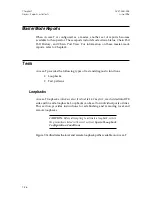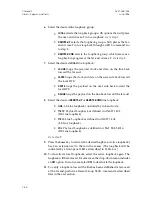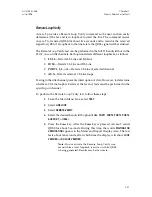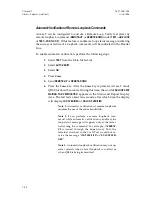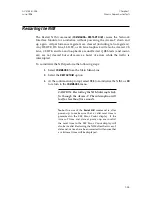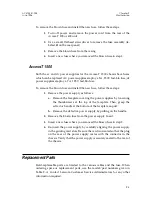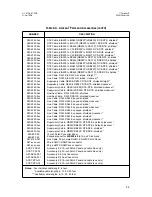
Setting Node Addresses and Operating Modes
When Access-Ts are chained via the RS485 Chain Ports, you must ensure that
each node is configured for the proper mode and has a unique address. The
mode and address must be set via DIP switches on the rear panel of the unit.
Each node must be given a unique address on the chain.
Refer to Chapter 3 for the address-setting and mode-selection procedure.
Configuring the Master for Polling
In order for the master Access-T to manage the slave Access-Ts in a chain, the
master Access-T must be configured with the polling address and dialout option
for each slave node. When polling is enabled for a particular slave, the master
Access-T includes that slave in its polling cycle. When dialout is enabled for a
particular slave, the master Access-T dials out to report changes in polling status
(responding or not responding) for that slave.
To communicate to slave units on the chain using SNMP, you must make sure
that the master unit has polling enabled for that slave and that the proper SNMP
parameters are enabled on the master as well as the slave.
You should enable polling only for nodes which exist and are expected to
respond. For one thing, the length of the polling cycle depends on the number
of slaves for which polling is enabled; if the master polls slaves which do not
exist, the time between polls of existing slaves will be unnecessarily lengthened.
Also, since the master Access-T declares an alarm when a slave does not
respond, polling non-existent slaves will result in superfluous alarms.
To configure the master for polling, perform the following steps:
1.
Press ? to make sure that the master is selected (i.e.,
m=00
in the Title
Bar). Do not perform the following procedure when communicating
with a slave.
2.
Select
SYSTEM
from the Main Menu Line.
3.
Select
CHAIN PORT
.
4.
Select
CONFIG
.
Chapter 8
ACST-0351-005
Using Access-T as a Master
June 1996
8-4

